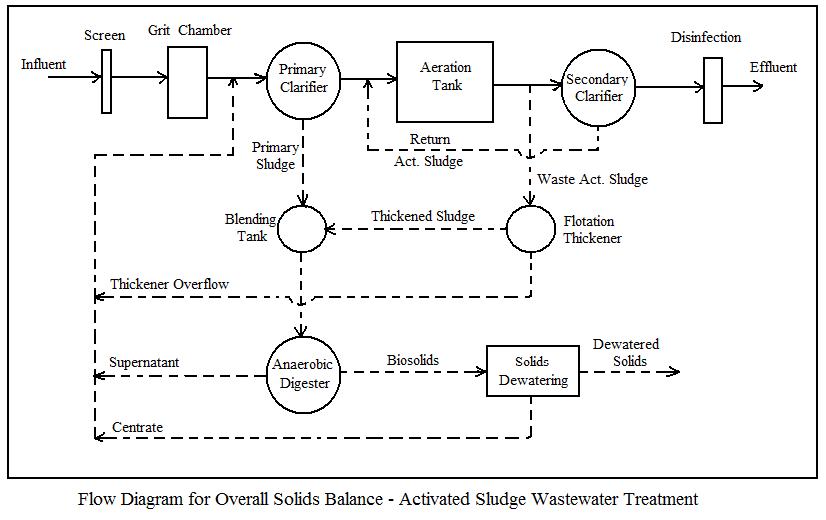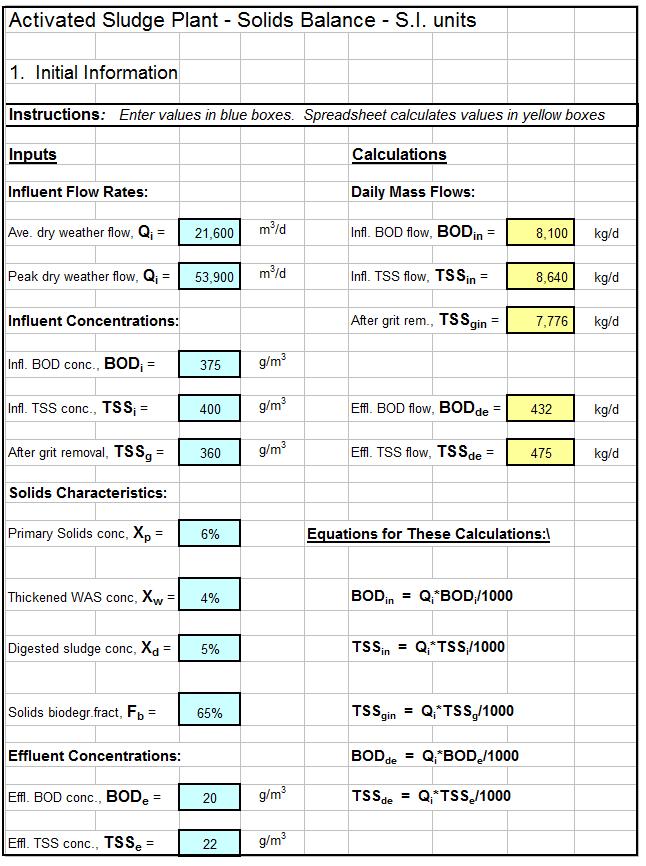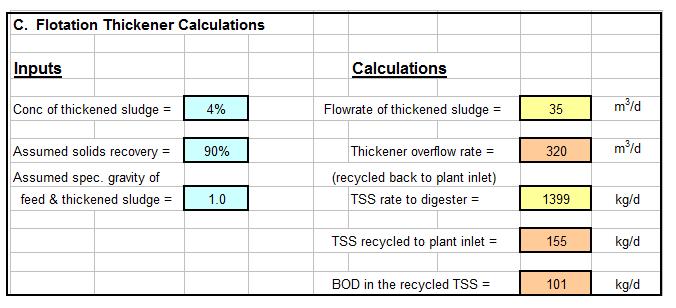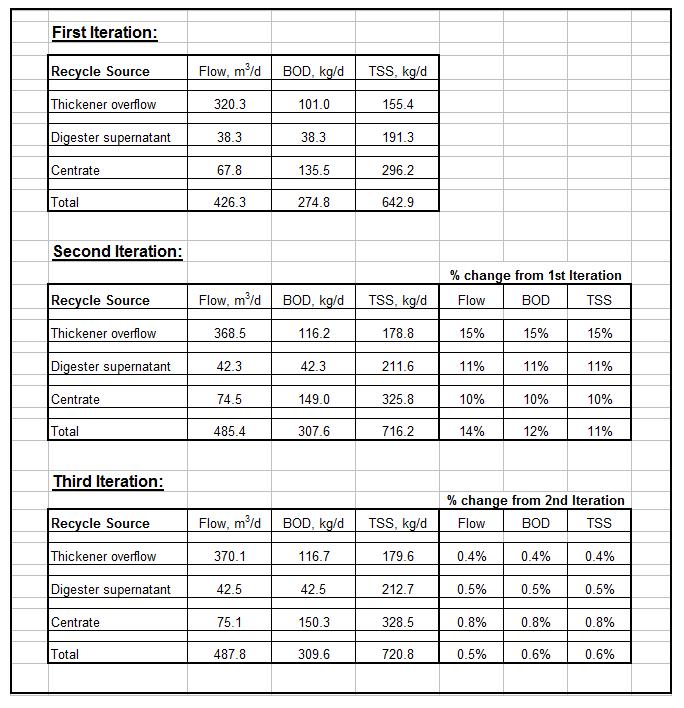Where to Find a Solids Mass Balance Spreadsheet for Activated Sludge Calculations
For Excel solids mass balance spreadsheets to make activated sludge calculations calculations, click here to visit our spreadsheet store. Obtain a convenient, easy to use spreadsheet for solids mass balance activated sludge calculations for only $22.95. Read on for information about the use of an Excel spreadsheet for estimating the effect of recycle flow, BOD and TSS through solids mass balance activated sludge calculations.
Solids Mass Balance Background for Activated Sludge Calculations
Several streams from sludge treatment processes are typically recycled back into the wastewater treatment plant inflow. Examples are sludge thickener overflow, anaerobic digester supernatant, aerobic digester supernatant, centrate from centrifuge dewatering, and filtrate from filtration dewatering. The liquid flow, BOD load, and TSS load in these recycled streams contribute to the wastewater flow to be handled by the mainstream wastewater treatment processes.
An iterative solids mass balance is an organized procedure for estimating the total flow rate, BOD load, and TSS load in the recycled flows from sludge treatment and handling processes. This type of calculation is illustrated in an eight page example in Metcalf and Eddy (Reference #1). The flow diagram below shows a typical set of sludge treatment processes and recycle flows for an activated sludge plant.
Activated Sludge Calculations Influent and Effluent Inputs for Spreadsheet
General information about the wastewater influent flow and characteristics will need to be input to the spreadsheet along with information about target effluent characteristics. The screenshot below shows typical influent and effluent inputs needed.
Solids Mass Balance Activated Sludge Calculations for Each Treatment Process
The next step is solids mass balance calculations for each of the treatment processes, leading to estimates of the recycle flow rate, BOD load and TSS load for each recycle stream. For a wastewater treatment plant with the flow diagram shown above, there would need to be solids mass balance calculations for the primary clarifier, the aeration tank/secondary clarifier, the sludge thickener, the anaerobic digester, and the sludge dewatering process. The screenshot below shows typical inputs and outputs for a solids mass balance over a sludge thickener.
Similar calculations would be made for each of the wastewater treatment and sludge treatment/management processes, leading to information about recycle flow rate, BOD load, and TSS load, for each recycle stream as shown in the summary tables in the next section. After completion of the first iteration, the recycle flowrate, BOD load and TSS load are added to values for those parameters for the incoming wastewater and all of the solids mass balance calculations are repeated in a second iteration.
Summary Tables
The screenshot below shows a set of tables summarizing the results of the calculated recycles flows from the first three iterations of the activated sludge calculations. Spreadsheets are available to make this type of solids mass balance calculations in either U.S. or S.I. units at a very low cost (only $22.95) in our spreadsheet store. These spreadsheets are set up to make the solids mass balance calculations for four iterations.
References
1. Metcalf & Eddy, Inc, (revised by Tchobanoglous, G, Burton, F.L., Stensel, H.D., Wastewater Engineering Treatment and Reuse, 4th Edition, New York, NY, 2003.
2. Bengtson, Harlan H., “Activated Sludge Solids Mass Balance Spreadsheet,” an online blog article.




